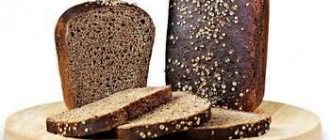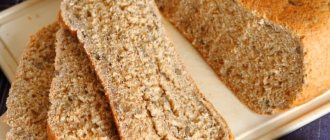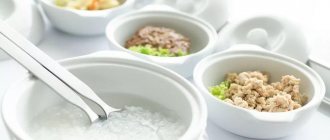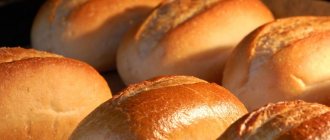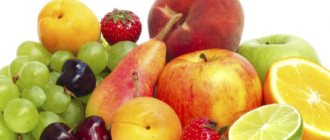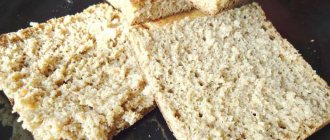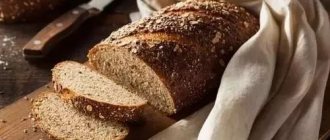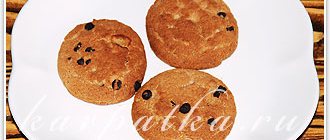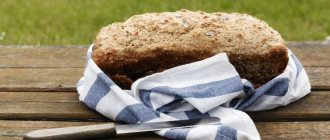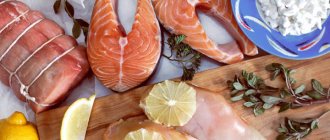Home page / Diets / Popular diets / Diet on bread and milk - tasty and effective
A diet based on bread and milk... This combination may sound implausible and unconvincing. However, don't write off the conclusions. Of course, losing weight is achieved by reducing the calorie content of food, but it should not harm your health, and for this you need to consume healthy foods, which are milk and bread. Don't believe me? Then see for yourself.
Diet on bread and milk
Basic rules of the bread diet
The main product of this diet is bread. But not all baked goods and not in any quantity are suitable for weight loss.
What kind of bread can you eat on a diet?
These should be products made from whole grains or a mixture of cereals, dietary or bran bread, or, in extreme cases, black bread made from rye flour. The more dietary fiber in baked goods, the healthier it is for your figure.
It is better to use yesterday’s slices or slightly dried in a toaster, then there will be no side effects in the form of bloating.
Bread norm per day
The biggest advantage of the bread diet is that there is no hunger strike. Women are allowed to eat 8-12 slices of bread per day, and men up to 16 slices. Of these, 2-3 slices of rye bread are allowed. Such a considerable amount of food, together with other permitted foods, ensures good satiety and the absence of a constant feeling of hunger, characteristic of other diets.
Authorized Products
It is useful to drink 200-250 ml of kefir or natural yogurt at night so that the intestines work well and there is no flatulence.
During the week, you can eat a little meat or fish, no more than 3 eggs, so that there is no protein deficiency. Green tea or herbal tea, juices diluted with water are acceptable drinks.
Prohibited Products
White bread, loaves and all baked goods made from premium flour, especially sweet ones (buns, buns, pies), are prohibited. Refined carbohydrates without fiber are absorbed quickly, which is why fat is not broken down and is stored in reserve.
To effectively lose weight, you will have to give up sugar, sweets and all fatty foods. You should also abstain from alcohol, it is very high in calories. Reduce the amount of spices that increase appetite.
How to supplement the diet?
You can expand your diet with the following products:
- cereals, especially buckwheat, unpolished rice, oatmeal, but not “quick” porridges;
- pasta made from durum wheat;
- legumes (peas, beans);
- low-fat dairy products (cottage cheese, hard cheeses);
- fresh and stewed vegetables, especially those with a high water content (cucumbers, zucchini), any cabbage, not just potatoes;
- non-sweet fruits and berries: strawberries, apples, currants, watermelon.
The most important rule for successful weight loss on bread is split meals. You need to eat at least 4-5 times a day, and do not skip meals. Let the portions be small but regular.
Important! During the diet, you should drink 5-6 glasses of water a day, take vitamins and mineral complexes so that there is no shortage of these compounds.
Table XE (bread units)
Now we move on to the next stage - considering the volume of grain units. Products table:
Flour products, cereals and grain crops
Products based on whole grains, wheat, barley or oats are characterized by a large amount of carbohydrates in their composition. But this does not mean that such foods should be excluded from the diet - they are important for diabetics. The main thing is to control your glucose level and measure it before and after eating food. Exceeding the norm at one time is not recommended. The most popular products per 1 XE:
- Bread with bran - one piece 13 mm thick, 30 g .
- Brown bread - one piece 10 mm thick, 25 g .
- Gray (white) bread - one piece 10 mm thick, 20 g .
- Breadcrumbs - 15 g .
- Crackers - 15 g .
- Borodino bread - one piece, 6 mm thick , 15 g .
- Butter bun - 20 g .
- Frozen dumplings and dumplings with cottage cheese - 4 pieces, 50 grams .
- Large pancake - one piece, 30 grams .
- Medium-sized pancakes - one piece, 30 g .
- Cheesecake - 50 g .
- Waffles - 1.5 pcs .
- Raw pasta - 1-2 tablespoons, 15 g .
- Boiled pasta - 2-4 tablespoons, 50 g .
- Wheat bran - 12 tbsp. spoons, 50 g .
- Corn - half a cob, 100 g .
- Porridge - 2 tbsp. with mountain, 50 g .
- Any cereal (uncooked) - 1 tbsp, 15 g .
- Popcorn - 10 tbsp. spoons, 15 g .
- Canned corn - 3 tbsp, 60 g .
Dairy products and milk
This element of the diet is considered the main supplier of protein and calcium. In addition, along with dairy products, the body receives vital vitamins B2 and retinol.
If a diabetic follows a diet, then preference should be given to foods with a minimum amount of fat. As for whole milk, you should avoid it completely. The reason is the high fat content in this drink. 200 ml of whole milk accounts for a third of the daily requirement. So if you add a product to your diet, it should be low-fat. As an option, it is possible to prepare a cocktail with the inclusion of pieces of fruit or berries.
The most popular elements of the diet include (per 1 XE):
- Milk, fermented baked milk, baked milk and cream - 1 glass, 0.2 liters .
- Kefir - 1 glass, 0.25 liters .
- Ice cream with milk (without waffles and icing) - 65 g .
- Creamy ice cream (with waffles and icing) - 50 g .
- Curd mass (sweet, without additives) - 100 g .
- Medium-sized cheesecake, with added sugar - 75 g, 1 piece .
- Curd mass with raisins - 40 g .
Vegetables, nuts and legumes
These are foods that should be in the diet of people with diabetes. With their help, it is possible to level out glucose levels and reduce the likelihood of complications of heart and vascular diseases. Together with raw vegetables and legumes, the body receives other useful elements - protein, fiber and potassium.
The best option is to give preference to foods that have a low glycemic index. As for vegetables with high levels of starch, it is recommended to minimize their consumption. This is especially true if you have stage 1 or 2 diabetes.
The list of products per 1 XE looks like this:
- Mashed potatoes - 2 tbsp. spoons, 90 g .
- Raw potatoes - 1 piece, 75 g .
- Fried potatoes - 35 g, 2 tbsp. spoons _
- Medium-sized carrots - three pieces, 0.2 kg .
- Chips - 25 g .
- Medium-sized beets - one piece, 0.15 kg .
- Fresh peas - 7 tablespoons, 100 g .
- Boiled beans - 3 tablespoons, 50 g .
- Boiled beans - 3 tablespoons, 50 g .
- Pumpkin - 0.2 kg .
- Nuts - 80-100 g (depending on the type);
- Jerusalem artichoke - 70 g .
Fruits and berries
Most fruits are allowed for diabetes. Exceptions are pineapple, watermelon, cantaloupe, grapes, bananas or mangoes. But fruit consumption increases blood glucose levels, so it is recommended to limit the amount of fruit intake. At the same time, sweet and unhealthy desserts can be replaced with berries.
Preference should be given to the following products - black currants, strawberries, gooseberries and cherries. The list of fruits and berries in terms of product volume per 1 XE is as follows:
- Orange - 1 piece, 150 g .
- Lemon - 3 pieces, 0.27 kg .
- Watermelon - 1 piece, 0.27 kg .
- Pineapple - 1 piece, 0.14 kg .
- Large quince - 1 piece, 140 g .
- Apricots - 2-3 pieces, 110 g .
- Lingonberries - 1 tablespoon, 140 g .
- Medium-sized banana - half, 70 g .
- Cherry - 15 pcs., 90 g .
- Grapes - 12 pieces, 70 g .
- Melon - 1 piece, 100 g .
- Medium pomegranate - 1 piece, 170 g .
- Kiwi - 1 piece, 110 g .
- Gooseberries - 6 tbsp. spoons, 120 g .
- Raspberries - 8 tbsp, 160 g .
- Cherries - 10 pcs., 100 g .
- Small apple - one piece, 90 g .
Dried fruits
If you have diabetes, you are allowed to take a whole group of dried fruits, except cherries, pineapple and dried bananas. It is allowed (with caution) to combine dried fruits and antibiotics. As for dried melon, its use is not prohibited, but mixing it with other products is not recommended. In case of diabetes of 1st and 2nd degree, the consumption of dried exotic fruits is prohibited. In particular, avocado, guava or papaya are contraindicated.
When planning a diet, the amount of product per 1 XE should be taken into account. The following dried fruits are worth highlighting:
- Figs - one piece 15 g .
- Dates - 2 pcs., 15 g .
- Apples - 2 tbsp, 20 g .
- Dried apricots - 3 pcs., 15 g .
- Prunes - 3 pcs., 20 g .
Beverages
If you have diabetes, you should also remember about the choice of drinks for daily intake. Here it is also worth considering the amount of carbohydrates in the composition. You should avoid sweet juices, giving preference to clean water. It is allowed to take vegetable and fruit juices, milk or tea, but taking into account the glycemic index of the products. Green tea is most beneficial for diabetics, as it has a beneficial effect on the circulatory system and reduces cholesterol and fat levels in the body.
The most popular drinks (taking into account the amount of product per 1 XE) include:
- Cherry - 0.4 cups, 90 g .
- Orange - half a glass, 110 g .
- Cabbage - 2.5 cups, 0.5 liters .
- Beetroot - 2/3 cup, 125 g .
- Grape - 1/3 cup, 70 g .
- Tomato - 1.5 cups, 0.3 liters .
- Pear - ½ cup, 100 g .
- Grapefruit - 1.5 cups, 140 g .
- Kvass - 1 glass, 0.25 liters .
- Apple and gooseberry - ½ cup, 100 grams .
Desserts and sweets
As for sweet foods, you should be careful with them due to the high content of sucrose and sugar. If you really want it, you should buy products with sweeteners. But even they should not be used uncontrollably, because many substitutes lead to weight gain. Popular products (with quantity per 1 XE):
- Honey - 12 g .
- Chocolate - 20 g .
- Sugar (pieces) - 2 pieces, 10 g .
- Sugar (sand) - 2 tsp, 10 g .
Every diabetic should have a bread unit diet (table or list of the most important foods) on hand. Over time, the key points are remembered and it is easy to choose a safe and rich diet.
Bread and water diet
This is the most budget-friendly and most stringent type of diet with bread, because the second product in it is water. It does not carry any calories or valuable substances. Therefore, nutritionists advise “sitting” on it for no longer than 3 days. Those who survived on such a meager diet for 5 days were able to get rid of 10 kg of excess weight.
Everything is very simple: every day you need to eat 200 g of bread and drink 2 liters of water, dividing this rather small portion into 5-7 meals. It is sometimes allowed to drink juice diluted in half with water as a drink.
Watermelon diet with black bread
This is a more gentle version of the pure watermelon diet. To lose weight, you need to eat 1 kg of watermelon for every 10 kg of body weight per day. This volume of sweet pulp is divided into 6 or 7 servings and supplemented with 2-3 slices of black (rye) bread per day. If you really want to eat, then another piece of cheese is allowed, no more than 50 g.
It is better not to drink water, so as not to increase the already considerable load on the kidneys.
A diet based on black bread and watermelon pulp is an exclusively seasonal way to lose weight, but it helps to lose up to 10 kg in 7 days, cleanse the body of toxins and excess salts. You shouldn't practice it for more than a week.
Options for bread and milk diet
Bread and porridge with milk
The first option will be a diet on which you are allowed to eat, in addition to black bread and milk, also oatmeal.
This diet of milk and bread allows you to lose 3-4 kg of excess weight in a week. There may be a fluctuation of plus or minus 1.5-2 kg - it depends on personal initial data.
Oatmeal should be cooked exclusively in water, without sweeteners, oil or other taste improvers. Just don’t take the one that doesn’t require cooking. You can eat it whenever it is convenient for you, but it will be most beneficial for breakfast.
A serving of black bread per day is about 200 g, it should be eaten with every meal. Milk (plus tea) - about half a liter, and it is drunk when not eating oatmeal. For example, if you had porridge in the morning, you drink milk only at lunch and in the evening. You can also add milk to tea, which is also suitable for breakfast. There should be no sugar in tea.
For example, in the morning oatmeal with bread and black tea, at lunch - tea with bread, for dinner - bread with milk. The next day - bread with tea and milk for breakfast, oatmeal with bread for lunch and tea with bread in the evening. Then we alternate throughout the week at our discretion.
“Soft” version of the bread and milk diet
For those who find the first diet too harsh, a simplified version is offered. You can eat boiled chicken, fish and meat, a fist-sized portion of vegetables (fresh, baked, boiled) and fruits (except bananas with grapes), as well as milk and bread.
All other foods should be excluded, and harmful foods such as smoked, fried, and baked goods should be completely forgotten.
Meals are divided into breakfast, snack, lunch, afternoon snack and dinner, while bread must be present in at least three meals. You can buy black, whole grain, bran bread and alternate them daily.
Bread with kefir
This option is suitable for those people whose bodies do not tolerate milk well. Since kefir is less likely to cause indigestion, but is just as healthy and nutritious, it will be an excellent solution for those who still want to try the bread and milk diet for themselves.
For three days you will have to consume 1.5 liters of kefir and 3 pieces of bread (daily norm). Bread with bran, whole grain and black will do.
This diet helps to effectively cleanse the stomach and intestines, making it possible to actually lose about 3 kg in 3 days. It’s not worth sitting on such a menu any longer. If the first experiment goes well and effectively, it is better to repeat the diet after 3-4 weeks.
Bread diet for weight loss menu for 7 days
To avoid severe stress for the body, it is important to ensure the intake of proteins, fats and carbohydrates without excess. This is the only way to reduce your body mass index.
Calculating body mass index is very simple: you need to divide your weight by your height squared, expressed in meters. If it turns out to be from 18.5 to 25, everything is fine. If the numbers are higher, then it’s time to lose weight.
The bread diet includes 5 meals. It alternates vegetable days, there should be 4 of them per week, as well as protein days (with fish or meat) - 3 days a week. This approach will ensure the supply of all important elements; there will be no deficiency in amino acids or fiber.
Vegetable day menu:
- Breakfast. Four slices of bread with a small amount of curd, grated carrots, unsweetened tea.
- Snack. A glass of any fermented milk drink or a small apple.
- Dinner. Stewed cabbage or mixed vegetables with 4 servings of bread and an egg, a glass of tomato, carrot or unsweetened fruit juice.
- First dinner. Vegetable salad, 4 slices of bread, thin soup without meat, green tea.
- Second dinner. Stewed or steamed vegetables, before bed a glass of fermented baked milk, yogurt without additives.
Protein day menu:
- Breakfast. Three slices of bread with coleslaw.
- Snack. A glass of any fermented milk product or one orange.
- Dinner. Sea fish or low-fat meat stewed with vegetables, 200 ml of vegetable juice.
- First dinner. Soup made only from vegetables, boiled cauliflower with 3 slices of bread and tea.
- Second dinner. A mixture of stewed vegetables. Before bed, 200 ml of tea or juice from a mixture of vegetables.
Fermented milk drinks (fermented baked milk, kefir, yogurt) should be without additives with a minimum fat content so as not to increase the calorie content of the diet. In the morning before breakfast you should take calcium and vitamin supplements.
It is better to eat fruits and berries after meals so as not to kill your appetite
Fruits and berries are best consumed between main meals, as snacks. It will be tasty, healthy, and low in calories. Lunch is already a fairly large meal. And despite the fact that vegetables, fruits and berries have a low calorie content, you still shouldn’t increase the volume of your stomach after a hearty lunch by adding a significant portion of fruit. They are quite tasty on their own. Give this wonderful and healthy dessert a special place in your diet.
The perfect snack. Making granola and energy bars at home Read more
6 day diet or bread and butter in the morning
This is an ideal option for those who are used to having breakfast with a cup of tea or coffee with aromatic buns flavored with butter. The only adjustment that needs to be made to your habit is to replace sweet pastries with more dietary bread (rye, bran, mixed grains).
Indicative menu
Breakfast:
- tea must be without sugar or coffee (1-2 cups);
- 2 small slices of rye bread with butter;
- also one of the products to choose from: apple, egg, sour jam, hard cheese.
Dinner:
- quite filling from boiled meat (poultry, veal) or fish with vegetables;
- a glass of kefir or vegetable juice;
- A piece of pineapple, orange, grapefruit is allowed.
Dinner:
- 2 slices of bread, supplemented with hard cheese or 200 g of unleavened cottage cheese. A slice of ham is allowed;
- Drinks include green or chamomile tea.
A prerequisite for such a diet is dinner no later than 18:00 and no food after it. A high-calorie breakfast from milk fat and a hearty lunch make you less hungry in the evening. If you have to stay up late, you can sometimes afford a banana, vegetable juice, or citrus fruits for a late dinner.
Bread diet of Olga Raz from Israel
Most doctors say that flour is harmful to your health and figure. Israeli nutritionist Olga Raz Kestner proved that bread is an ideal product for weight loss. Her diet does not look like torture at all; on the contrary, it is tasty, varied, with a minimum of restrictions.
The right baked goods help you lose weight and promote the production of the happiness hormone.
The diet consists of two stages:
- The first stage is designed for 7-14 days. During this period, you can eat bread made from wholemeal flour or whole grains, about 10 pieces per day, eating it gradually. Eating every 2 or 3 hours. The slices can be supplemented with a thin layer of low-fat cottage cheese, vegetable puree, a piece of boiled meat, and salmon. A salad made from fresh vegetables without dressing is healthy.
- At the second stage it is necessary to record the result. This period is not so strict and has no time limit. Instead of 2 slices of bread, it is allowed to eat a small portion of pasta made from durum wheat or buckwheat, or brown rice. You can eat lean meat, vegetables and fruits, salads made from them, seasoned with olive oil, and eggs. Taboos are only on very fatty foods, sweets, and alcohol.
You should drink a sufficient volume (1.5-2 liters) of liquid: mineral water, tea, juices from various vegetables.
Gluten-free bread, without yeast, with seeds: what are the benefits?
Which flour is healthier?
Olga Tyurina
Scientific Secretary of FSANU NIIHP, Ph.D.
– Traditional bread baked at enterprises cannot be prepared without wheat or rye flour. And non-traditional types of flour, such as amaranth, are used as additional ingredients. Each type of flour is rich in certain nutrients, as are other components.
Amaranth flour
Amaranth flour is gluten-free and rich in protein. The composition of amaranth flour includes amino acids (arginine, threonine, isoleucine, lysine (which is essential for the absorption of calcium), valine, histidine), iron, fatty acids, vitamins A and B.
How to properly store flour and cereals - read HERE.
Buckwheat flour
Buckwheat flour also does not contain gluten (like buckwheat). Buckwheat flour contains zinc, magnesium, iron, vitamins B and E, antioxidants and vegetable protein. It has a low glycemic index (the same as buckwheat), which is important for people with diabetes.
Corn flour
Its distinctive feature is its high fiber content, which helps reduce cholesterol and remove fat deposits from the body. In addition to fiber, it also contains protein, vitamins B, A, E, as well as microelements: magnesium, calcium, iron, phosphorus, silicon and others. Cornmeal is also gluten-free.
Whole wheat flour
Whole grain bread, like mass-produced baked goods, contains vegetable protein, B vitamins, PP, and dietary fiber, but in larger quantities.
Details of Roskachestvo’s study of multigrain bread are HERE.
Will multigrain bread help you lose weight, read HERE.
How does gluten affect the well-being and weight of a healthy person?
Anna Ivashkevich
nutritionist, clinical psychologist-dietitian, member of the National Association of Clinical Nutrition
– Gluten has a rather pleasant viscous consistency, and this is very important when making bread: thanks to gluten, it turns out elastic and porous. The myth that digestive problems, depression and fatigue, and insomnia are caused by gluten has become entrenched in society after certain publications about a new disease - celiac disease.
By the way, 1% of the population of our planet suffers from this disease. Gluten is not harmful to your health, and you should only avoid gluten-containing foods if you feel bloated after eating certain foods.
Is it possible to gain weight due to gluten? Of course not! Gluten itself cannot cause obesity: our weight depends on total caloric intake. If a person eats too much, he will gain weight, and it does not really matter whether he chooses foods containing gluten or not. But if you are prone to allergies, then an excess of gluten can lead to certain problems - bloating, diarrhea, intestinal problems, but, in addition, sometimes small pimples appear on the shoulders, abdomen, face, and dandruff may also appear.
In this case, you should either reduce or remove gluten from your diet for 3-4 weeks. Analyze your condition: if it gets better, then try to minimize gluten in your diet - replace dark bread, oatmeal, semolina, wheat flour, pasta and bulgur with products made from buckwheat or rice flour.
Sesame & Co: is bread with seeds and grains healthy?
Additional recipe ingredients, such as flax seeds, enrich baked goods with the beneficial substances they contain. This could be protein, vitamins, minerals.
What beneficial properties do superfoods have and how can you replace them? Read HERE.
Sesame
These grains are distinguished by a very high content of useful substances: vegetable protein, monounsaturated acids, B vitamins, iron and calcium. It is worth remembering that the substance sesamin is obtained from sesame, which can be used in the prevention and treatment of cancer.
Flax seeds
Crispy small grains of golden or brown color. Contains heart-healthy omega-3 alpha-linolenic acid and plenty of fiber. In addition, flax seeds are a source of phytoestrogens, natural substances that are similar in their effects on the body to the female hormones estrogens. Due to this, flax seeds may be beneficial for women with low estrogen levels - for example, during menopause.
Poppy
The tiny black seeds contain many beneficial nutrients: iron and calcium, fiber, and monounsaturated fatty acids, which can increase levels of “good” cholesterol (high-density lipoprotein) and reduce levels of “bad” cholesterol (low-density lipoprotein).
Quinoa
Quinoa has a very low glycemic index and is also an excellent source of plant-based protein, fiber and folate. In addition, quinoa contains hesperidin, a polyphenol that is known to lower blood pressure and cholesterol levels and slow down inflammatory processes.
Sunflower seeds
One of the most popular additives that manufacturers use in making bread. Rich in vitamin B6 - the “energy vitamin”. This means that bread with sunflower seeds becomes an optimal source of complex carbohydrates, which are slowly absorbed and give us a feeling of fullness and energy for a long time. In addition, they contain a lot of vitamin E, which protects the body from oxidative stress.
Chia seeds
Chia is a champion in dietary fiber (fiber), with most of it being indigestible fiber that aids digestion and reduces the risk of diabetes.
Caraway
In European countries, this traditional ingredient of Borodino bread is considered a superfood, and for good reason: it contains many polyphenols, which protect the body from chronic diseases and have antioxidant and anti-inflammatory effects.
Pumpkin seeds
Rich in zinc and polyphenols - natural antioxidants that neutralize free radicals that damage cell membranes and activate aging processes in the body. Chlorogenic acid normalizes blood sugar levels and thereby reduces the risk of diabetes and cardiovascular diseases.
Is there no bread without yeast?
Irina Tyurina
senior researcher, Ph.D.
– Rye and rye-wheat bread cannot be baked without acidifying the dough, this is due to the characteristics of rye flour - rye bread in our country is mainly prepared with sourdough. For wheat bread, the use of sourdough is not a technological necessity, because it can be prepared using only baker's yeast.
Yeast is a source of selenium, B vitamins, folic acid, provitamin D, K, PP, E, minerals (potassium, calcium, zinc, magnesium, iron) and essential amino acids. The yeast itself is killed during baking, but valuable substances remain in the bread.
When using starters, flavoring substances accumulate in bread, which give the product a more pronounced pleasant taste and aroma, and also protect it from microbiological spoilage. In addition, the use of starter cultures enriches the product with vitamins, amino acids and other biologically active substances.
Very often, yeast-free bread is called bread made with sourdough. Sourdough is a semi-finished bakery product that is obtained by fermenting a nutrient mixture with lactic acid bacteria or lactic acid bacteria and yeast. Even spontaneously fermented sourdough also contains yeast. The difference between yeast grown in sourdough and conventional pressed yeast is only that baker's yeast was specially created by industry for the purpose of targeted and rapid action. After all, the starter takes several hours, or even days, to prepare. Moreover, yeast fungi are in the air, flour (and work, by the way, when kneading dough), on the surface of fruits, vegetables, and berries. Consequently, there is no bread without yeast, so the inscription “yeast-free bread” is largely a marketing ploy.
Read more about the difference between yeast and sourdough bread, as well as which one is healthier, HERE.
Thank you for reading this text to the end. Follow the news, subscribe
mail.
When quoting this material, active link to the source
required.
Diet on bread and milk
The tasty and mildest variety of the bread diet includes whole grain or yeast-free bread and milk. 3 out of 5 meals should consist of these two products. They will saturate the body with protein, minerals, and carbohydrates. Up to 200 g of wholemeal bread, as well as 500 ml of milk, are allowed per day.
The remaining two meals include oatmeal cooked in water, stewed or raw vegetables, and steamed fish.
If the body does not tolerate regular milk well, you should consume a lactose-free variety or low-fat kefir. Thanks to this diet, you lose 3-4 kg in a week.
Diet based on bread units for weight loss
In addition to the glycemic index, bread units are also used to estimate the amount of carbohydrates in a product. One such unit is equal to 12 g of sugars, which corresponds to a slice of white bread. Proper nutrition means eating no more than 30 bread units per day. Those who are trying to lose weight need to reduce this figure to 10 units.
To make diet planning easier, special tables have been developed. They are important not only for those losing weight, but also for diabetics. Sample menu for three meals a day:
- Breakfast: a couple of apples or a mix of apples and carrots, unsweetened tea, maybe coffee.
- Lunch: vegetarian soup or borscht, cream soup, a glass of dried fruit compote.
- Dinner: 150-200 g of steamed meat or fish, alternated with the same portion of pasta, rice porridge, buckwheat; Be sure to have a glass of fermented milk product.
To get the effect, you must adhere to such strict dietary restrictions for at least 2 weeks.
Diet tomato juice and black bread
Although tomato juice is rich in vitamins, especially carotene, it is a low-calorie product, so a diet based on bread and tomato juice is quite strict. It is not recommended to practice it for more than 3 days. Fasting days are carried out according to the following scheme: breakfast and dinner with only a glass of tomato juice, for lunch – vegetable juice and bread made from rye flour.
The second version of the three-day tomato-bread diet, in addition to two main products, also includes kefir. The daily menu for five meals a day looks like this:
- A serving of black bread (50 g) and 300 ml of tomato juice.
- A glass of low-fat kefir.
- Rye bread toast and 200 ml tomato juice.
- A glass of tomato juice enriched with a spoonful of bran.
- A glass of low-fat kefir.
It is not necessary to drink only pure tomato juice for weight loss; you can add celery, lemon, and beets to it for a variety of flavors.
What kind of bread can you eat while losing weight?
The highest calorie bread is made from premium white wheat flour. This flour contains a lot of starch, a minimal supply of nutrients, and synthetic vitamins. The snow-white color indicates that the product has undergone a bleaching procedure to give it a marketable appearance (natural flour is not white). The calorie content of this type of bread is 260-270 kcal.
Rye is considered more dietary due to its 245-250 kcal value, as well as its higher fiber content. Its main disadvantage is poor digestibility. It is not recommended for use by people with gastrointestinal problems.
Oatmeal bread contains only 225 kcal. However, the main benefit of oatmeal lies in its ability to remove excess water, toxins and waste from the body. In addition, it can prolong the feeling of fullness, which is very important for those losing weight.
Corn bread has more calories (260 kcal) than oat bread, but is no less healthy. It has a unique vitamin and mineral composition, improves peristalsis, reduces the level of “bad” cholesterol and has a positive effect on the functioning of the cardiovascular system.
Whole grain bread is considered the healthiest and lowest in calories. It is distinguished by the highest content of healthy fiber, which takes the longest to digest in the stomach, its ability to clean blood vessels (remove cholesterol) and excellent mineral composition. Regular consumption of baked goods made from whole grain flour can improve peristalsis and reduce the risk of developing cancer.
Whole grain product is contraindicated for ulcers, cholecystitis, pancreatitis and acute gastritis, as it increases the acidity of gastric juice.
These are not the only types of bread that can be consumed during the diet. Nutritionists recommend paying attention to simple baked goods made from buckwheat, spelled, coconut, pumpkin and flaxseed flour.
Another difference between dietary bread is the absence of yeast in its composition. Thanks to this, fermentation processes are not provoked in the gastric environment, and bread can be introduced into the diet even of people with gastritis and high acidity.
How to quit the bread diet and consolidate the effect
The most dangerous period is when you go off the diet. At this stage, it is important not to lose your temper and not eat unhealthy foods that your body misses: sweets, cakes, fried foods, fast food. If you want to preserve the result obtained, you will have to forget about them.
After strict restrictions on food, you should gradually introduce new healthy foods over 2 weeks, replacing portions of bread with them. Instead of 2 slices, a serving of pasta or porridge, one boiled potato or legumes are allowed. Fresh fruits and vegetables should be consumed up to 3 times a day. This way the body will make up for the lack of vitamins and minerals.
A small increase in caloric intake should be compensated by physical activity, but not strength, but moderate: yoga, dancing, active walking.
Basic Rules
All “weight loss” people have long known that the main enemy of a slim figure is carbohydrates. Therefore, the basis of every diet is an almost complete rejection of carbohydrate foods. Olga Raz-Kestner experimentally proved the opposite. According to her, all low-carb diets sharply reduce the level of the happiness hormone - serotonin. As a result, your mood worsens, your appetite increases, and an uncontrollable feeling of hunger appears. On a bread diet, the body will not suffer from a lack of carbohydrates, and the process of weight loss will continue.
The basis of the diet from Olga Raz-Kestner is low-calorie bread made from whole flour or with added bran, rye bread or crispbread. This type of bread contains vitamins E, B1, B2, magnesium, phosphorus, calcium, potassium and other useful macroelements. The maximum number of calories allowed is 35-45 kcal in one piece.
When eating bread rich in coarse fibers, there is no sudden release of glucose and insulin; energy is produced more slowly and is consumed by the body gradually. Accordingly, the body will not accumulate any fat deposits in unnecessary places. The main thing is to adhere to simple rules.
- You need to eat small and often (4-5 times a day) and at the same time.
- It is necessary to maintain an interval between meals of 3-4 hours.
- Skipping another meal is strictly prohibited, even if you are not hungry yet.
- It is necessary to maintain a drinking regime and consume at least two liters of fresh drinking water.
- As a last resort, dietary bread can be replaced with regular rye bread at a ratio of 2:1.
The bread diet from Olga Raz-Kestner is divided into two stages:
Stage 1: active weight loss. During this time, it is allowed to eat low-calorie bread, spreading it with a thin layer of low-fat spread. On the day you need to eat:
- women - 8-12 small pieces;
- men - 12-16 small pieces.
In addition, the menu must include products from the list of permitted ones. The nutritionist recommends combining bread with protein foods and vegetables. The duration of the stage is 14 days.
Stage 2: consolidation of the result. The main goal is not to gain back the lost weight. At this stage, it is necessary to gradually expand the diet, supplementing it with permitted products. The duration of the stage is determined individually. On average - 2-3 weeks.
Authorized Products
Allowed products for the first stage of the bread diet:
- sandwiches with low-fat cottage cheese (up to 5%), fish (including salted), lean meat (chicken, turkey, quail, beef, veal);
- ham;
- any vegetables, except those containing starch. This could be cabbage, zucchini, tomatoes, bell peppers, broccoli, asparagus, green peas, various types of lettuce;
- eggs (3 times a week in any form);
- fermented milk products (yogurt, kefir, fermented baked milk) - 200 g per day;
- It is recommended to eat meat or fish with vegetables 3 times a week. On this day, bread consumption should be reduced by 1/3;
- Be sure to consume fruits daily (avocados, apples, plums, pears, etc.);
- It is allowed to use a small amount of vegetable oil for dressing salads;
- green tea, coffee (sometimes), vegetable juices (tomato, carrot, celery juice).
The second stage is characterized by a gradual expansion of the diet. Whole grain bread is gradually being replaced by other products from the list of permitted foods.
Permitted products for the second stage:
- porridge and pasta. It is advisable to choose minimally processed cereals (green buckwheat, brown rice, etc.). So, instead of two slices of bread, you can eat wheat, buckwheat, oatmeal or rice porridge or a small portion of durum wheat pasta;
- potatoes (it is acceptable to consume 1 baked potato per day);
- legumes (lentils and beans);
- the amount of fruit increases (up to three times a day);
- Fermented milk products are still required every day.
Prohibited
The following foods are prohibited while following the bread diet:
- any sweets (honey, sugar, confectionery, candies, chocolate, marmalade) and anything that contains refined sugar;
- smoked meats, pickles, sauces, marinades;
- ketchup and mayonnaise;
- alcohol;
- carbonated drinks;
- preserves and jams;
- any baked goods;
- foods high in animal fats;
- fatty meats;
- fatty fermented milk products (homemade cottage cheese, milk, sour cream).
How to supplement the diet
Since the diet is not particularly varied, nutritionists strongly recommend supplementing it with:
- throughout the course of this nutrition system, take multivitamins and calcium;
- drink plenty of clean drinking water - for women the recommended amount of water is 8-10 glasses a day, for men 10-12.
If you follow these simple recommendations, the kilograms will fall off faster, and in return you will receive a boost of vigor and good mood.
